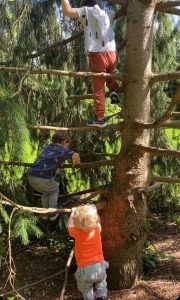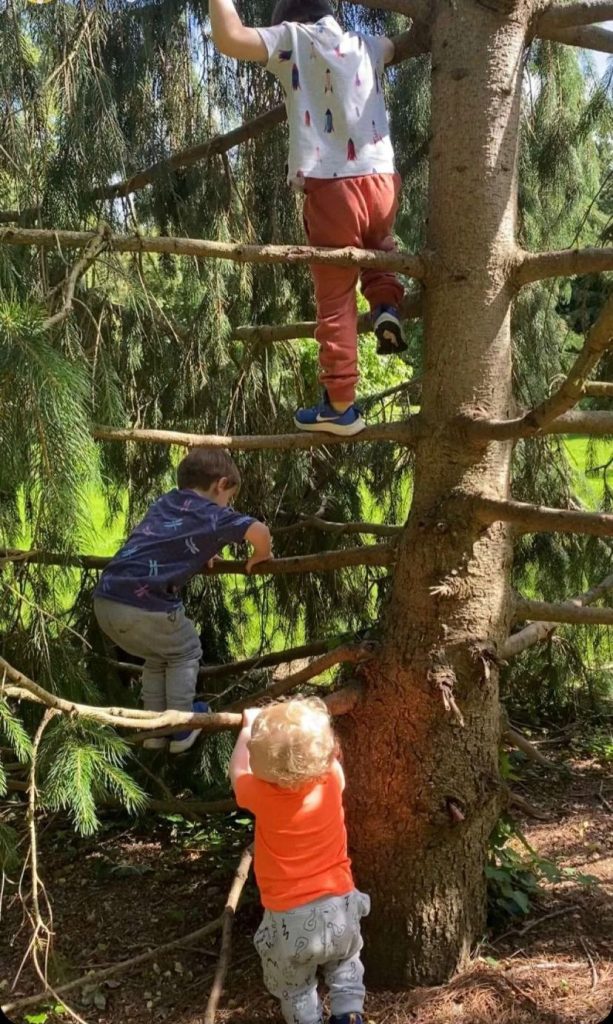The Crucial Role of Play in Diverse Environments: Fostering Development Through Outdoor and Risky Play
Play is essential to a child’s development, acting as a vital tool for learning, exploration, and social interaction. When children engage in play across varied environments—especially outdoors—they experience numerous benefits that contribute profoundly to their physical, emotional, and cognitive development. This blog will explore the importance of play, particularly risky play, and its correlation with physical literacy and overall well-being.

The Significance of Play in Varied Environments
Engaging in play within diverse settings fosters creativity and adaptability. According to the American Academy of Pediatrics (AAP), play enhances children’s problem-solving skills, encourages imagination, and cultivates resilience (AAP, 2018). Whether at home, in the park, or a structured environment such as a classroom or daycare, varied play settings provide different stimuli, promoting holistic growth.
- Indoor Play: Cognitive Growth Indoor environments allow for structured play with educational resources like puzzles, building blocks, or art supplies, fostering cognitive skills and fine motor development. Activities such as role-playing or imaginative games enhance creativity and communication abilities, essential for emotional intelligence.
- Outdoor Play: A Natural Classroom Outdoor play is vital for a child’s physical and mental health. Research indicates that outdoor environments encourage children to engage in more vigorous and imaginative play, resulting in increased physical activity levels (Burdette & Whitaker, 2005). Outdoor play supports gross motor skills development, coordination, and balance while allowing children to experience nature and the elements firsthand.
The Importance of Being Outdoors
Spending time outdoors offers immense benefits that extend beyond physical activity. Nature play promotes exploration, curiosity, and a connection to the environment. Benefits of outdoor play include:
- Promoting Physical Activity: When children play outdoors, they are more likely to run, jump, climb, and engage in activities that develop their physical literacy—a critical aspect of overall health. According to the World Health Organization (WHO), physical activity in childhood is crucial for establishing healthy habits that carry into adulthood (WHO, 2020).
- Enhancing Emotional Well-Being: Outdoor play has been linked to reduced stress and anxiety levels. Natural settings provide a calming effect, encouraging mindfulness and emotional regulation, as highlighted by studies suggesting that time spent in nature can improve mood and emotional resilience (Kaplan & Kaplan, 1989).
The Concept of Risky Play
Risky play, characterized by thrilling elements such as heights, speed, and uncertainty, is essential for children’s growth. According to the International Journal of Play, engaging in risky play promotes confidence, problem-solving skills, and decision-making (Little & Eager, 2010). Risky play not only enables children to test their limits but also helps them learn how to assess and manage risks effectively, preparing them for real-world challenges.
Encouraging risky play can foster:
- Resilience: Experiencing and overcoming challenges builds resilience in children. Mastering a physically risky activity, like climbing a tree, enhances self-esteem and the ability to face future challenges.
- Social Skills: Risky outdoor play often involves collaborative efforts with peers, which can strengthen friendships and enhance negotiation skills. Children learn to communicate, cooperate, and resolve conflicts during these interactions.
Correlation Between Physical Literacy and Development
Physical literacy encompasses the skills, knowledge, and attitudes that enable individuals to engage confidently and competently in physical activities. A strong foundation in physical literacy contributes to various aspects of a child’s development:
- Physical Development: By participating in diverse play experiences, children develop coordination, strength, endurance, and flexibility, which are vital for various sports and physical activities.
- Emotional Development: Mastery of physical skills can lead to increased self-efficacy and confidence. Engaging in physical activities serves as a Vehicle for self-expression, thereby enhancing emotional well-being.
- Social Development: Group play and team sports encourage social interaction and collaboration. Physical literacy fosters teamwork, communication, and social cohesion, vital for building friendships and community connections.
Conclusion
Incorporating varied environments for play—especially outdoor and risky play—into children’s lives is fundamental for their physical, emotional, and cognitive development. By recognizing the significance of play and promoting physical literacy, parents, educators, and caregivers can create enriching experiences that empower children to thrive. Ensuring that children have access to diverse play opportunities not only enhances their developmental outcomes but also fosters a lifelong love for active living and exploration.
References:
- American Academy of Pediatrics. (2018). The Importance of Play in Promoting Healthy Child Development and Maintaining Strong Parent-Child Bonds. Retrieved from AAP Website
Burdette, H. L., & Whitaker, R. C. (2005). *Resurrecting Free Play in Young Children: Looking Beyond Fitness and Fatness








